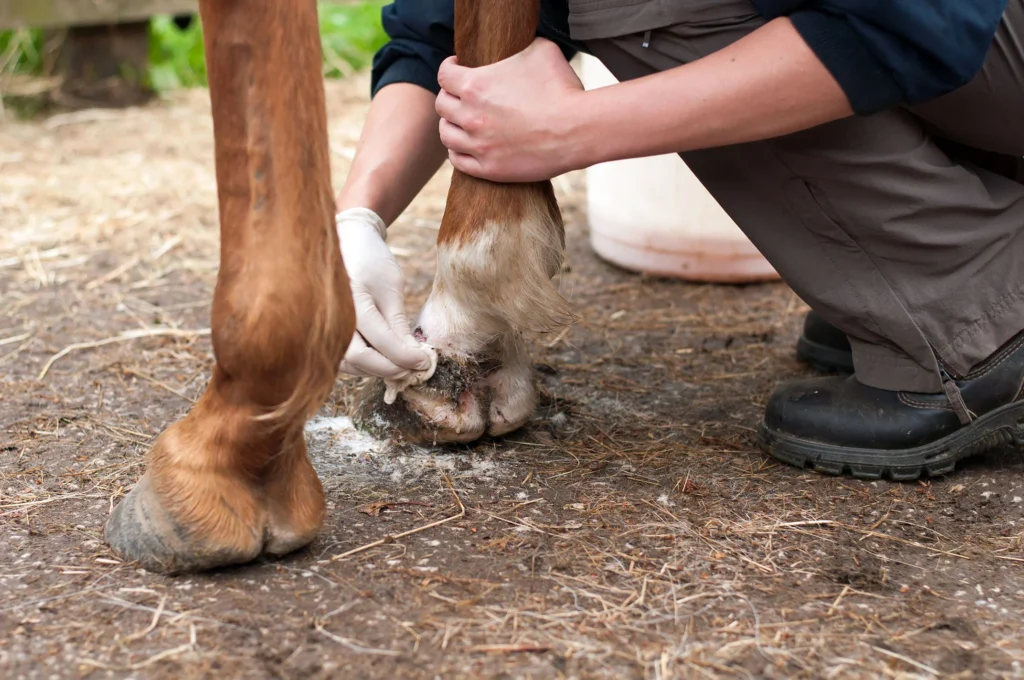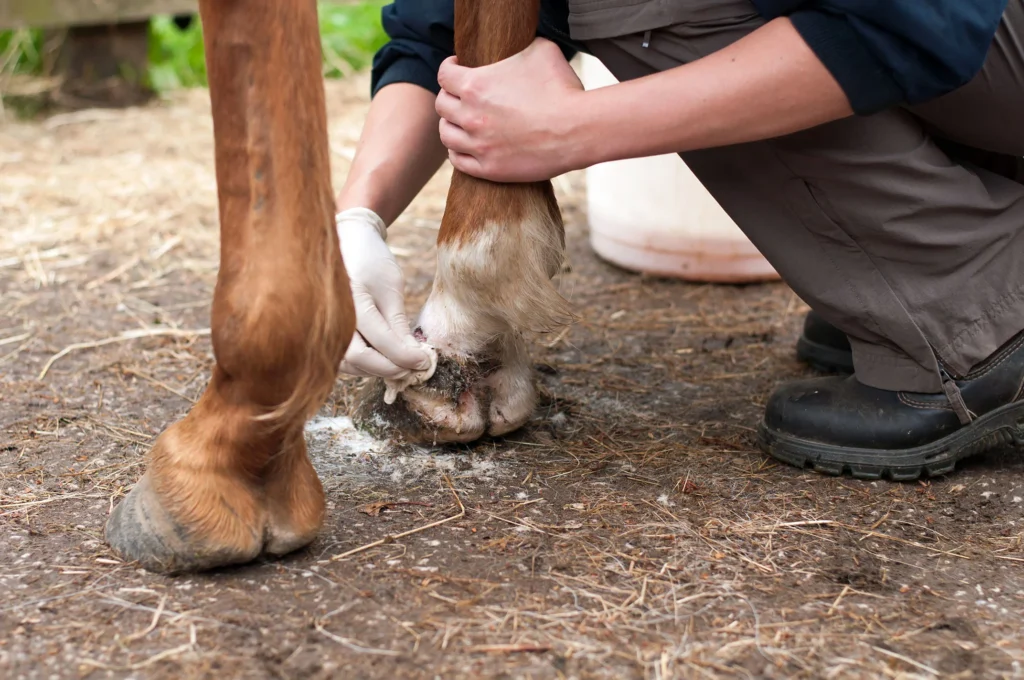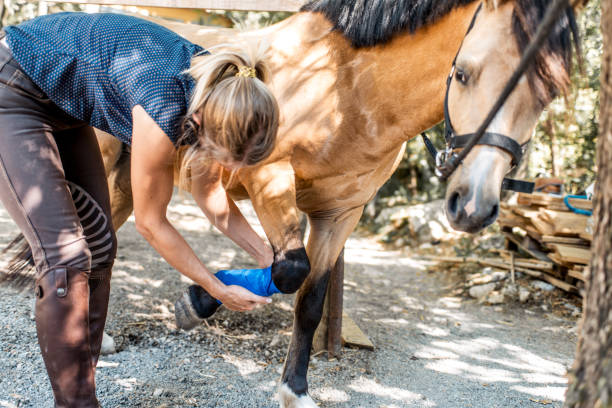How do you treat a horse injury?: Horses are strong yet delicate animals prone to injuries due to their active nature. Whether it’s a minor cut, a sprain, or a serious wound, knowing how to properly treat a horse injury can prevent complications and speed up recovery. This comprehensive guide covers the types of horse injuries, first aid steps, treatment methods, and prevention tips to keep your horse healthy.
1. Common Types of Horse Injuries
Horses can suffer from various injuries, including:
- Cuts & abrasions (from fences, nails, or sharp objects)
- Bruises & swelling (due to kicks or falls)
- Sprains & strains (overexertion or missteps)
- Tendon & ligament injuries (common in athletic horses)
- Hoof problems (abscesses, cracks, or punctures)
- Fractures (rare but severe, often requiring surgery)
Recognizing the type of injury helps in providing the right treatment.
2. First Aid for Horse Injuries

Immediate Steps to Take:
✔ Stay calm – A panicked horse can worsen the injury.
✔ Assess the injury – Check for bleeding, swelling, or lameness.
✔ Clean the wound – Use saline solution or clean water to flush out debris.
✔ Control bleeding – Apply pressure with a clean bandage or cloth.
✔ Stabilize fractures – Prevent movement and call a vet immediately.
Read More:- What is the best nutrition food for dogs?
Essential First-Aid Kit for Horses:
- Sterile gauze & bandages
- Antiseptic solution (e.g., Betadine)
- Hoof pick & poultice
- Cold pack & wrap
- Scissors & tweezers
- Pain relievers (only if prescribed by a vet)
3. How to Treat Minor Cuts and Wounds
Step-by-Step Treatment:
- Clean the wound – Remove dirt with saline or diluted antiseptic.
- Apply antiseptic – Use Betadine or chlorhexidine to prevent infection.
- Bandage if needed – Use a non-stick pad and vet wrap for protection.
- Monitor for infection – Look for pus, heat, or swelling.
🚨 Avoid using hydrogen peroxide—it can damage healthy tissue.
4. Treating Sprains, Strains, and Muscle Injuries
Signs of muscle or ligament injuries include:
- Lameness
- Swelling or heat in the affected area
- Reluctance to move
Treatment Approach:
- Cold therapy – Ice packs for 15-20 minutes to reduce swelling.
- Rest & confinement – Limit movement for healing.
- Anti-inflammatory meds (if prescribed by a vet).
- Gradual rehab – Controlled exercise after recovery.
5. Managing Hoof and Leg Injuries
Common Hoof Problems & Fixes:
- Hoof abscess → Soak in Epsom salt, apply poultice, and call a farrier.
- Cracked hooves → Keep clean, use hoof moisturizers, and trim regularly.
- Puncture wounds → Remove debris, disinfect, and wrap until vet arrives.
Leg Injuries (Tendon & Ligament Damage)
- Cold hosing – Reduces inflammation.
- Support wraps – Provides stability.
- Stall rest – Critical for recovery.
6. Serious Injuries: Fractures and Tendon Damage

🆘 These require immediate veterinary attention!
Signs of a Fracture:
- Severe lameness
- Visible bone deformity
- Horse refuses to bear weight
Emergency Care:
- Stabilize the limb with a splint (if trained).
- Keep the horse still to prevent further damage.
- Call the vet ASAP – Surgery may be needed.
7. When to Call the Vet
Seek professional help if:
- Deep or large wounds (may need stitches).
- Persistent lameness (could indicate fractures or tendon tears).
- Signs of infection (pus, fever, foul odor).
- Suspected internal injuries (from a fall or kick).
8. Preventing Horse Injuries
✅ Regular hoof care – Farrier visits every 6-8 weeks.
✅ Safe paddock & stall design – Remove sharp objects.
✅ Proper warm-up & cool-down – Reduces muscle strain.
✅ Quality nutrition – Supports joint & muscle health.
✅ Supervised turnout – Avoid overcrowding.
9. FAQs About Horse Injury Treatment
Q: Can I use human painkillers for my horse?
A: No! Drugs like ibuprofen are toxic to horses—only use vet-prescribed meds.
Q: How long does a horse take to heal from a tendon injury?
A: 6-12 months, depending on severity. Strict rest is crucial.
Q: Should I bandage a wound or leave it open?
A: Bandage if dirty or in a high-motion area; otherwise, let it breathe.
10. Conclusion
Properly treating a horse injury involves quick first aid, accurate diagnosis, and vet care when needed. By following these steps, you can ensure a faster recovery and reduce the risk of long-term damage. Prevention is always better than cure, so maintain a safe environment and regular health checks for your horse.
Read More:- What is the best nutrition food for dogs?



